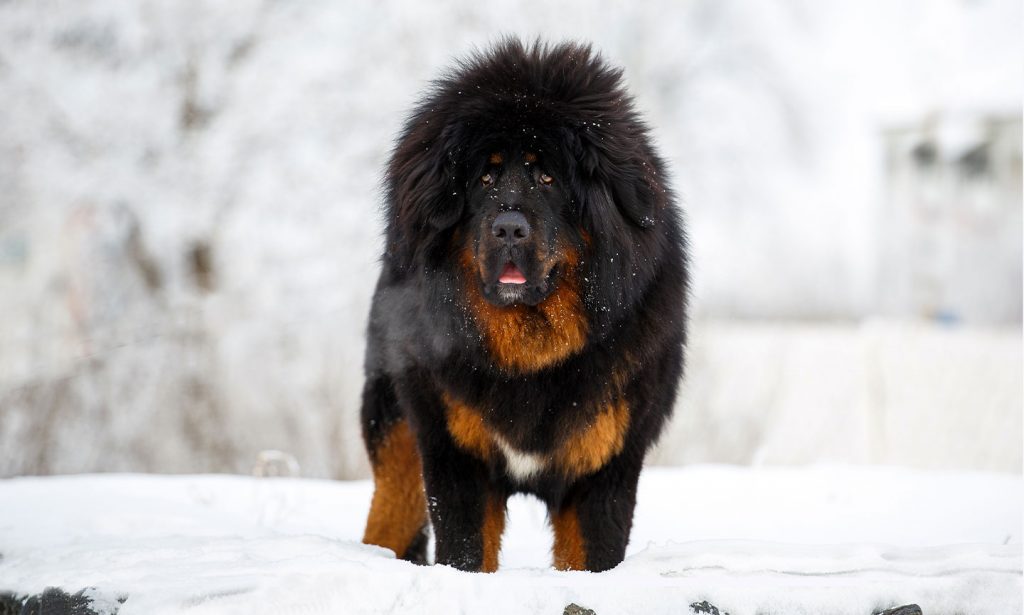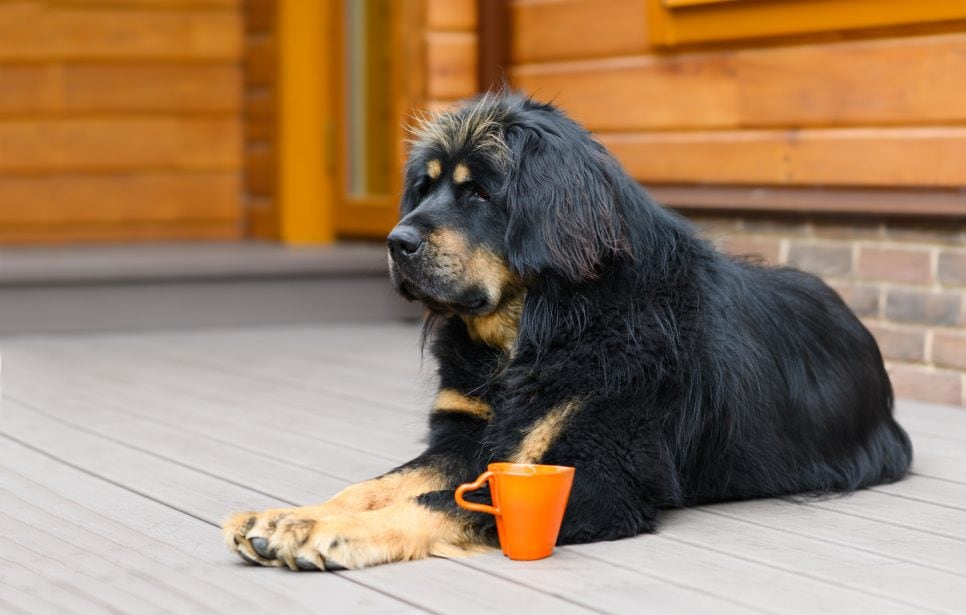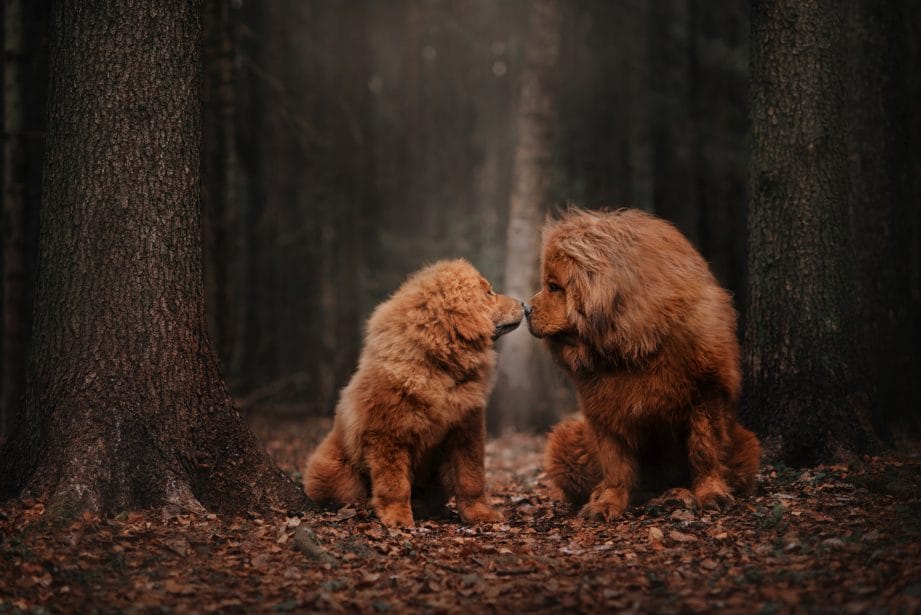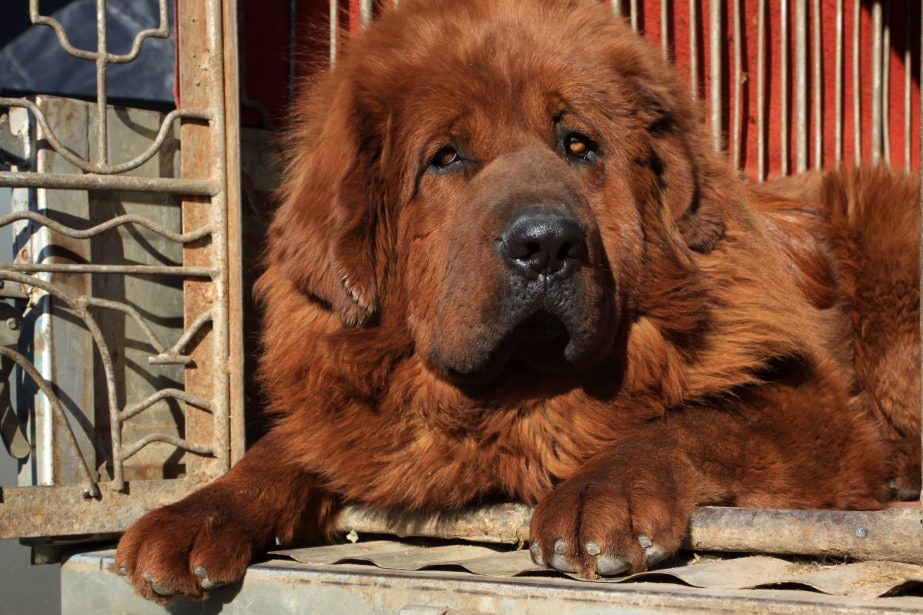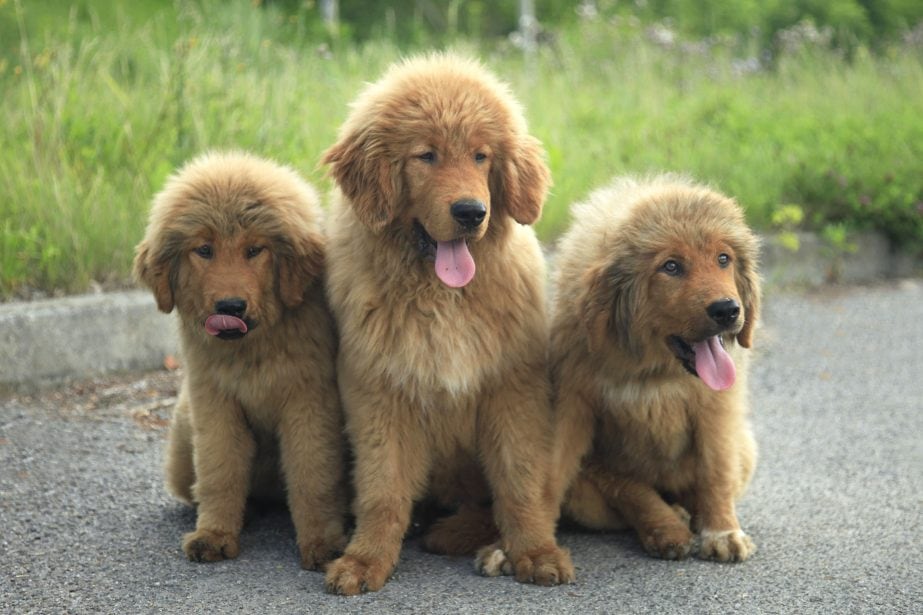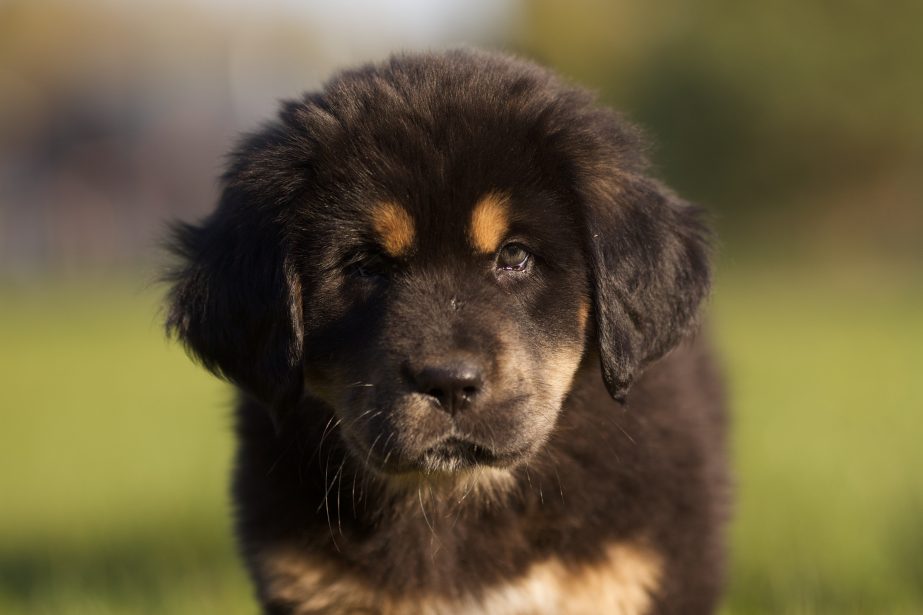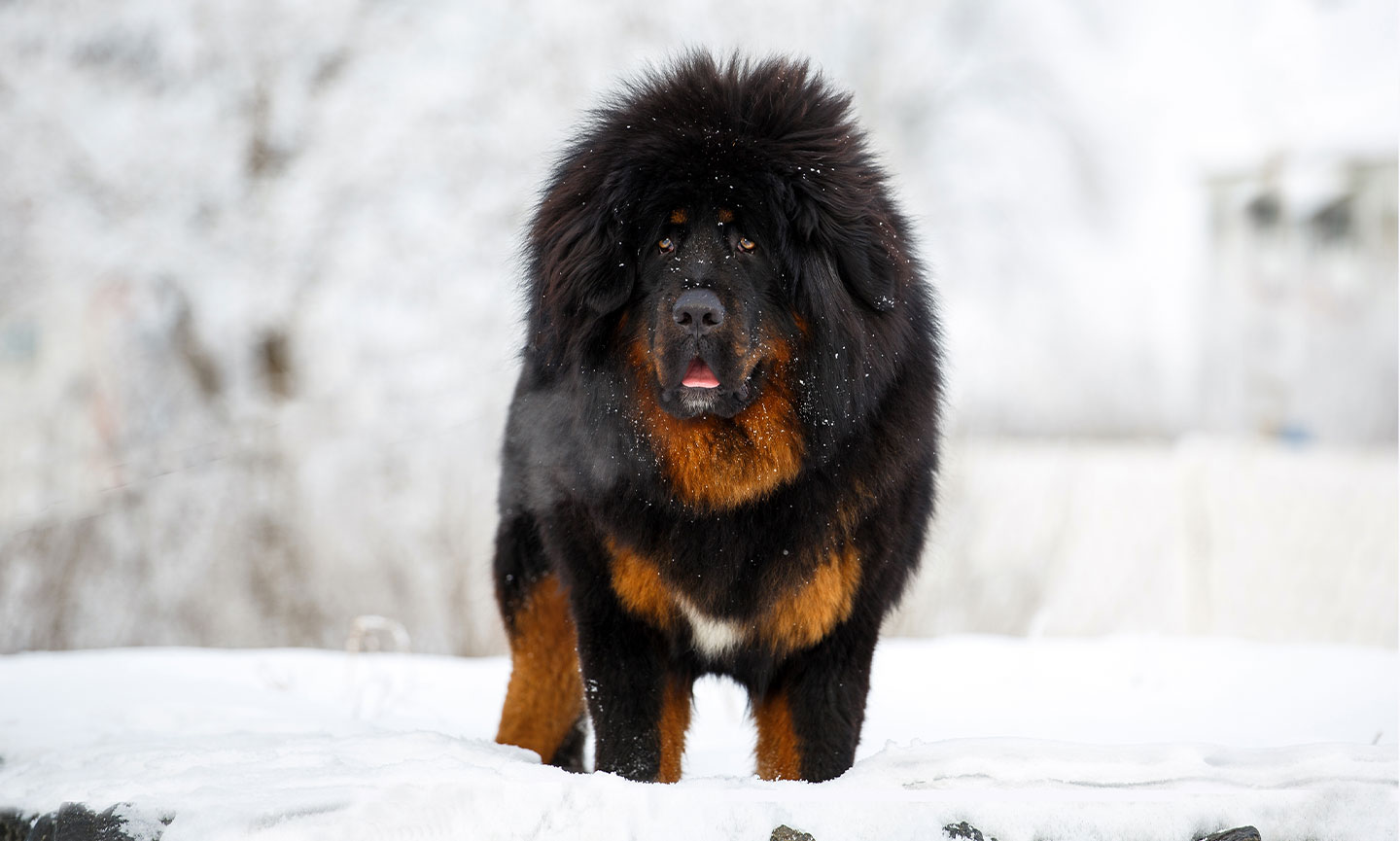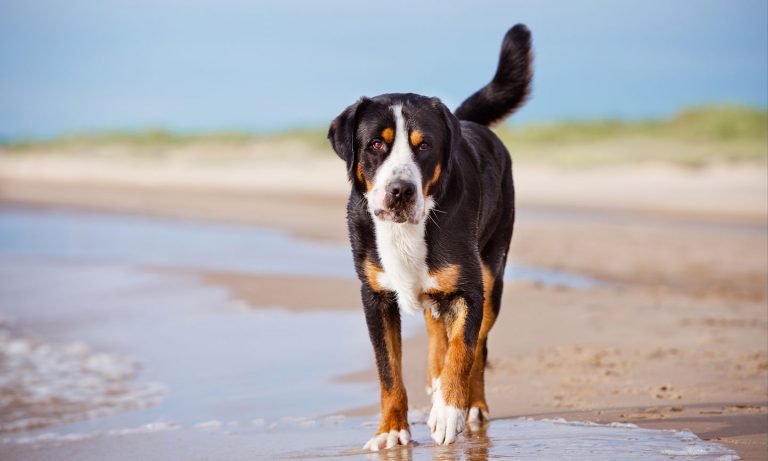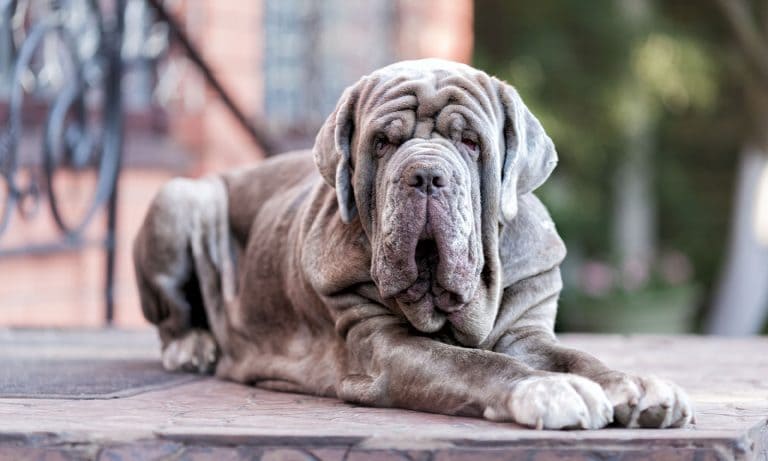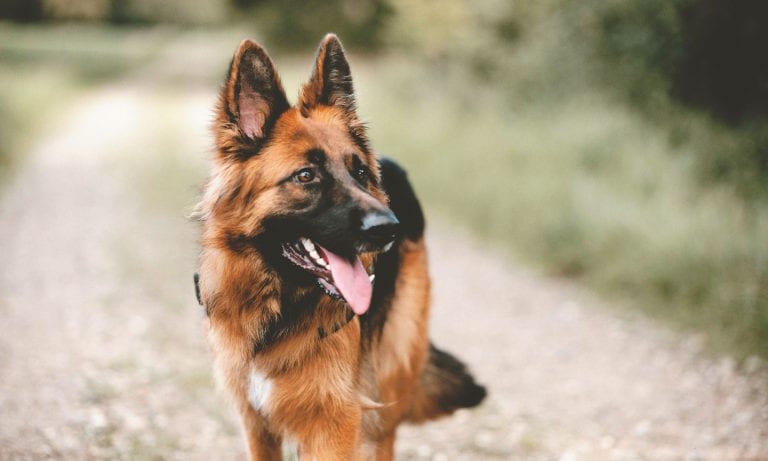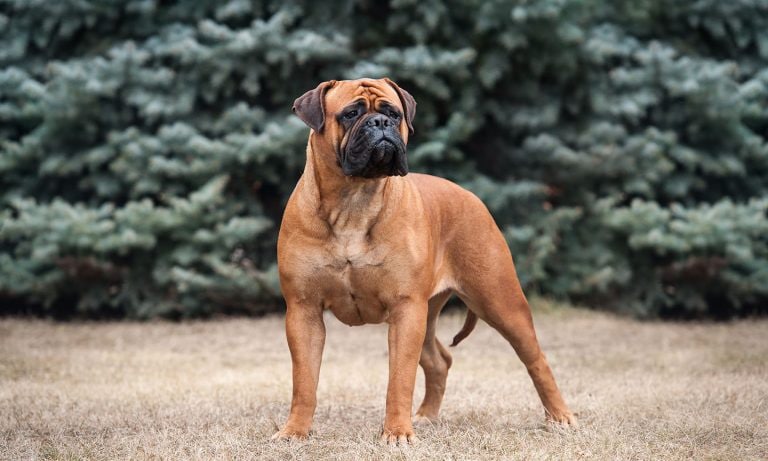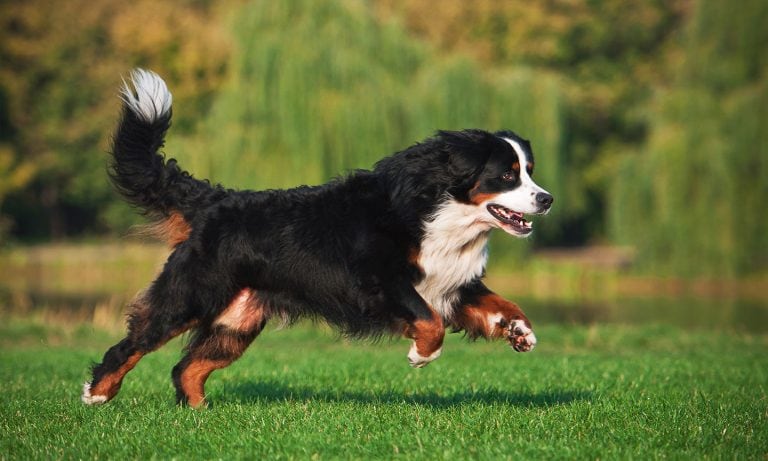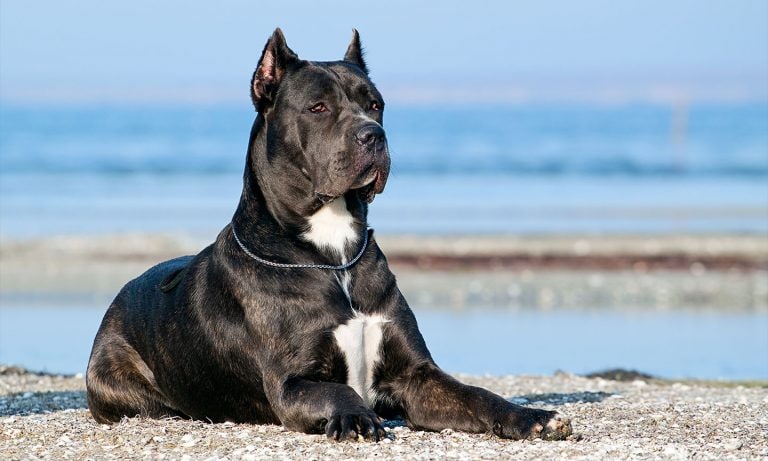If you love big fluffy dog breeds who just want a job to do, a place to guard and someone to care for, the Tibetan Mastiff, one of the world’s largest breeds of dogs weighing in at up to 150 pounds for a male dog and 120 pounds for a female, might be right for you. With their floofy 80s-rock-band hair, soulful eyes, and independent introvert nature, Tibetan Mastiffs tend to be wary of strangers but are loving and loyal to their people. Just be sure you can give you give them room to roam and work to perform and you will have a loving companion to share your world.
Breed Snapshot
Temperament:
BrainyDevotedIndependentCoat Color:
BlackBrownBlueGrayGold
Best For
The majestic and independent Tibetan Mastiff makes a devoted family pet. Ranking among the largest dog breeds, they thrive with a job to do and plenty of room to roam.
Tibetan Mastiff Temperament
Tibetan Mastiffs are independent introverts who tend to be wary of strangers but are loving and loyal to their people. Though personality can vary from one dog to the next, these dogs tend to be headstrong and often think they know what’s best and view themselves more as equal partners than pets.
Like all dogs, Tibetan Mastiffs require proper socialization from the time they’re a puppy. But with plenty of exposure to different people, pets and situations throughout their lives, they’ll be more accepting, though perhaps still aloof, reserving their affection for loved ones.
Pet parents need to be diligent about working with their pup to prevent biting tendencies. They have a bite force of 500 pounds, stronger than that of an American Pit Bull Terrier or German Shepherd, so even a playful bite could do major damage.
Tibetan Mastiff puppies can be taught to get along well with children and other pets when raised with them, but as adults, they may be less accepting of new dogs or other people’s children. And with their sheer size and strength it’s a good idea to supervise even well-socialized Tibetans around young children, cats or small dogs. Remember to teach all children how to interact gently and respectfully with dogs.
Their bossy natures make them a bad fit for obedience competitions, and they’re not built for agility or speed. But give these dogs some sheep, goats or cattle to guard, and watch them excel. They were bred to guard livestock, after all, and they’re at their best and happiest when they’re allowed to be watchful over their domain.
How to Care for a Tibetan Mastiff
For so much dog, especially one with so much hair, the Tibetan Mastiff breed is not as high-maintenance as you might think. They don’t need a lot of grooming or exercise, and for a large breed, they don’t eat as much as you’d expect. But they do need work keeping them well-socialized.
Tibetan Mastiff Health
Tibetan Mastiffs have a life expectancy of 10 to 12 years, and they don’t have a lot of health issues. It’s good to know what those potential health problems are in advance, so you can keep your pup healthy for longer.
- Elbow and Hip Dysplasia: Dysplasia is when the joint does not form properly and therefore tends to be loose in the socket. Keeping your dog at a healthy weight can help manage both of these conditions, and so can joint supplements recommended by your vet. In more severe cases, your vet may also recommend physical therapy or even surgery.
- Bloat: Bloat can cause a life-threatening condition called gastric dilatation-volvulus (GDV), which is when the stomach becomes twisted. Symptoms can include dry heaving/retching, abdominal distension and restlessness. If your pet has any of these symptoms or you suspect they have bloat/GDV, take them to the vet immediately as this is an emergency and may require immediate surgery.
- Hypothyroidism: Hypothyroidism is an endocrine disorder where the thyroid gland does not produce enough thyroid hormone. Low thyroid is typically easily managed with daily medication throughout your dog’s life.
- Eye problems: Entropion and ectropion affect the eyelids, causing them to fold either outside in or inside out. These conditions don’t usually affect vision, but they can cause irritation and discomfort, and in severe cases, they can damage the cornea. Your vet may recommend a topical ointment to lubricate the eyes or surgery in severe cases.
Tibetan Mastiff History
Not a lot is known about the Tibetan Mastiff’s origins beyond the fact that the breed is ancient and comes from the mountains of Central Asia. A mastiff-type dog who originated in Tibet 5,000 years ago is believed to be the progenitor of both the modern Tibetan Mastiff and all European mastiff breeds. One theory for how that happened is that early European travelers to Tibet were gifted these dogs and brought them back to Europe.
As for the Tibetan Mastiff, two types emerged in Tibet from that original mastiff breed: the Do-Khyi, working dogs who guarded livestock in villages and farms; and the larger Tsang-Khyi, who guarded Tibetan monasteries.
What is known for certain about this breed picks up around the year 1800, when an English ship captain’s travel memoirs mentioned the “huge dogs” guarding the monasteries of Tibet. The first such dog was brought to England in 1847 and presented to Queen Victoria as a gift. Just a few decades later, in 1873, the breed officially entered England’s brand-new Kennel Club as the Tibetan Mastiff. The following year, the Prince of Wales brought two more of them to England, where they were eventually shown in the Alexandra Palace show.
But it wasn’t until 1950 that the breed made their way to the US, when two Tibetan Mastiffs were given to President Truman. Even so, it wasn’t until the end of the 1970s that the breed made its first appearance in American dog shows. And only recently, in 2007, did the American Kennel Club officially recognize this breed as a member of the Working group. Nowadays, it’s easier to find a purebred Tibetan here in the States than it is in Tibet.
So, where can you find a purebred Tibetan Mastiff puppy? A list of reputable breeders is available on the American Kennel Club website, where the Tibetan Mastiff price ranges from $2,500 to $3,500. That usually includes health screenings and vaccinations, and in some cases it also includes a championship pedigree. Tibetan Mastiff rescue organizations can also help you find Tibetans in need of good homes; alternatively, you can keep an eye out for one at your local animal shelter or search Chewy’s database of adoptable dogs in your area.
FAQs
Do Tibetan Mastiffs shed?
Yes, Tibetan Mastiffs shed. They are moderate shedders throughout most of the year, but once a year, when the temperature warms up, their undercoat has a blowout that will give your vacuum cleaner a workout. This tends to be worse in warmer climates and may not happen in areas that stay cold year-round.
Learn more about the best dog brushes to groom your pet
Are Tibetan Mastiffs good family dogs?
Tibetan Mastiffs can be good family dogs—for the right family. With enough socialization, these dogs can fit in well and be quite devoted to an introverted family with older children or teens who don’t do a lot of entertaining. But due to their large size and temperament, they’re not the best dog for families with young children or small pets or those who like to have people over.
What are the most popular Tibetan Mastiff names?
The most popular Tibetan Mastiff names are Andromeda, Amazon, Athena, Augustus, Axel, Bane, Beast, Boss, Buck, Bullet, Butch, Buzz, Caesar, Calisto, Captain, Champ, Chief, Diesel, Duchess, Duke, Electra, Goliath, Harley, Huntress, Hulk, Jojo, Justice, Katniss, Kodiak, Leia, Magnum, Maverick, Mystique, Nyx, Onyx, Rebel, Remington, Rex, Ripley, Roxy, Sable, Samson, Sassy, Spike, T-Bone, Ursula, Xena, Yukon and Zeus. Get more dog names here.
What are the most common Tibetan Mastiff mixes?
The most common Tibetan Mastiff mixes are:
- Tibetan Mastiff-Husky mix (Tibetan Mastiff-Husky)
- Tibetan Mastiff-German Shepherd mix (Mastiff Shepherd)
- Tibetan Mastiff-Great Dane mix (Tibetan Mastiff-Great Dane)
- Tibetan Mastiff-Rottweiler mix (Tibetan Mastiff-Rottweiler)
- Tibetan Mastiff-Poodle mix (Mastipoo)
- Tibetan Mastiff-Golden Retriever mix (Tibetan Golden Mastiff)
Note: These are not purebred dogs but mixed breeds.
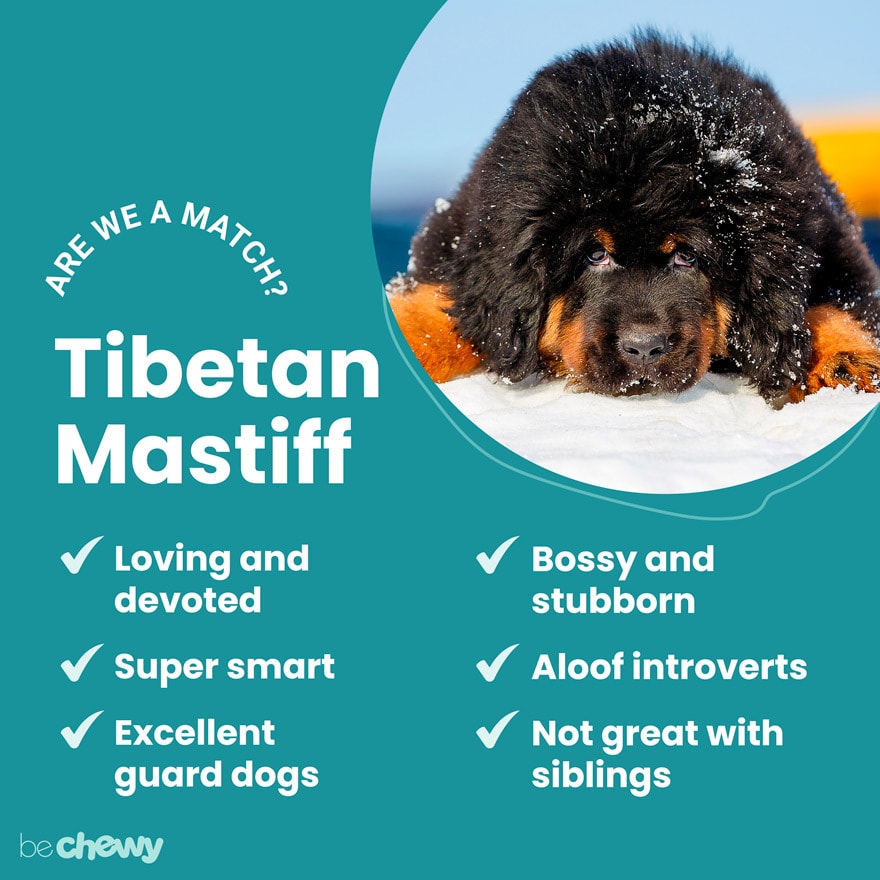
Top Takeaways
If you’re hoping to get a Tibetan Mastiff as a pet, you’ll have your work cut out for you. They’re sweet and loving to their family, but they’re introverted and protective guardians who aren’t fond of strangers. They need lots of socialization and training to help them fit in, and they don’t tend to do well with pet siblings or small children. These dogs are at their best as a guard dog with lots of land to patrol and animals to watch over—doing what they were bred to do.
Read More:
How to Teach Your Dog Not to Bark
Puppy Feeding Guide: How Much to Feed a Puppy & More
Expert input provided by Dr. Sara Ochoa, DVM, veterinary consultant for DogLab, and Russell Hartstein, Certified Dog Behaviorist and Trainer in Los Angeles and founder of Fun Paw Care.
Breed characteristic ratings provided by veterinarian Dr. Sarah J. Wooten, DVM, CVJ, a veterinarian at Sheep Draw Veterinary Hospital in Greeley, Colorado; dog trainer and behavior consultant Irith Bloom, CPDT-KSA, CBCC-KA, CDBC, owner of The Sophisticated Dog, LLC, in Los Angeles; and certified animal behavior consultant Amy Shojai, CABC, in Sherman, Texas.
The health content was medically reviewed by Chewy vets.

Search for Adoptable Tibetan Mastiffs Near You
Female Names
- Tashi
- Molly
- Gypsy
- Nala
- Luna
- Lucy
- Sable Justice
- Harley
- Zena
- Annie
Male Names
- Kratos
- Cairo
- Titan
- Leo
- Daryl
- Bodee
- Thor
- Ozzie
- Georgie
- Odin
Share:
